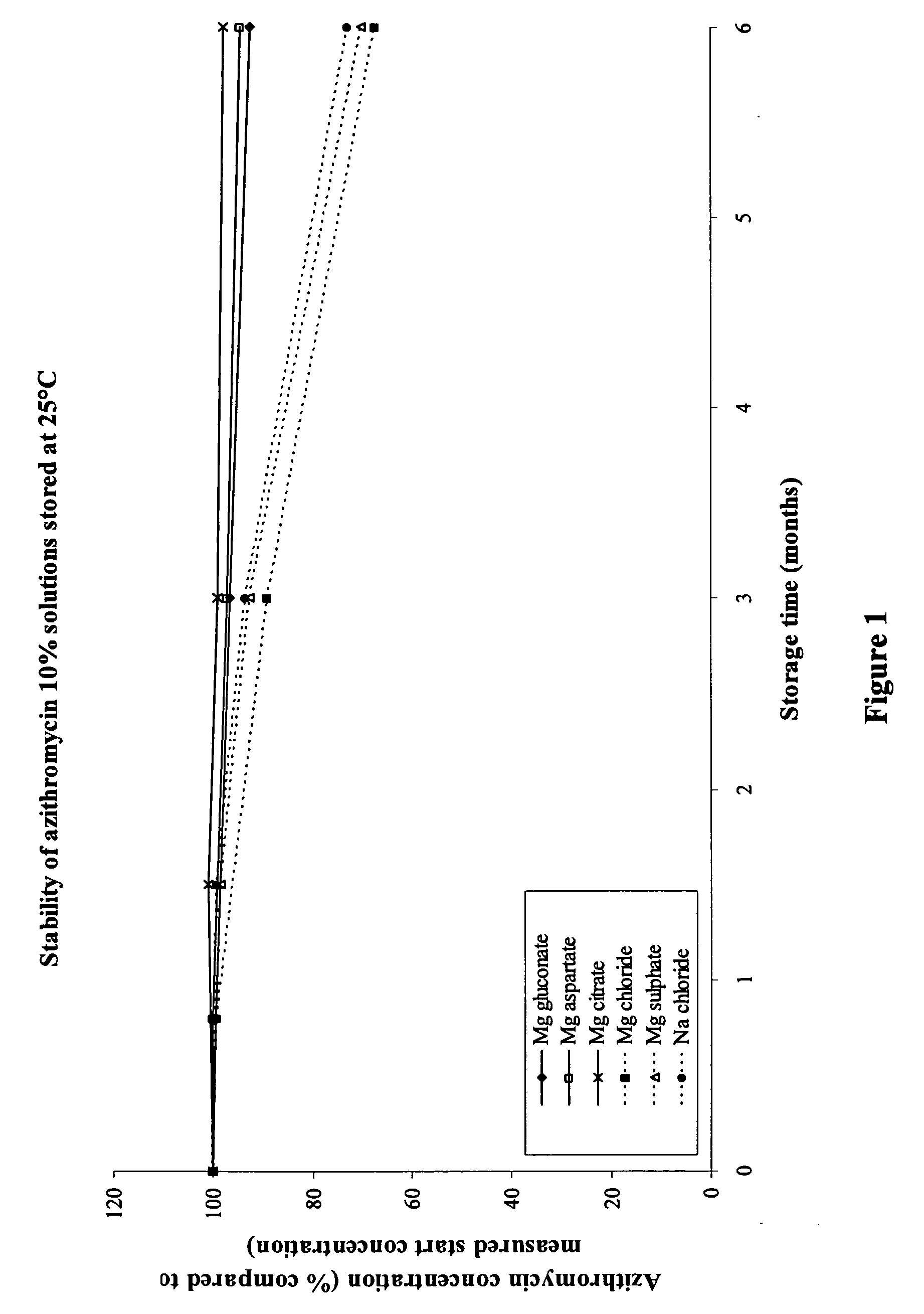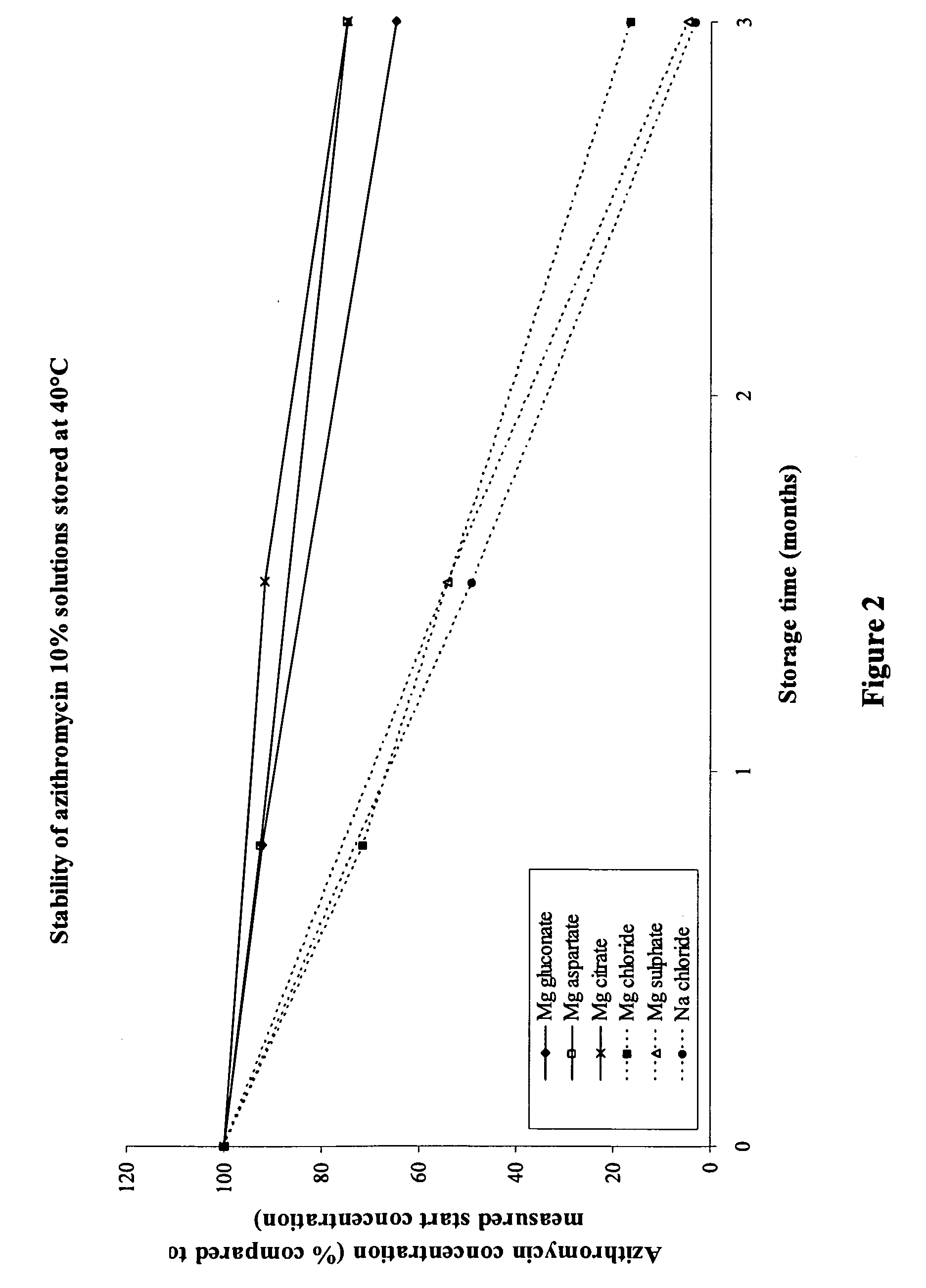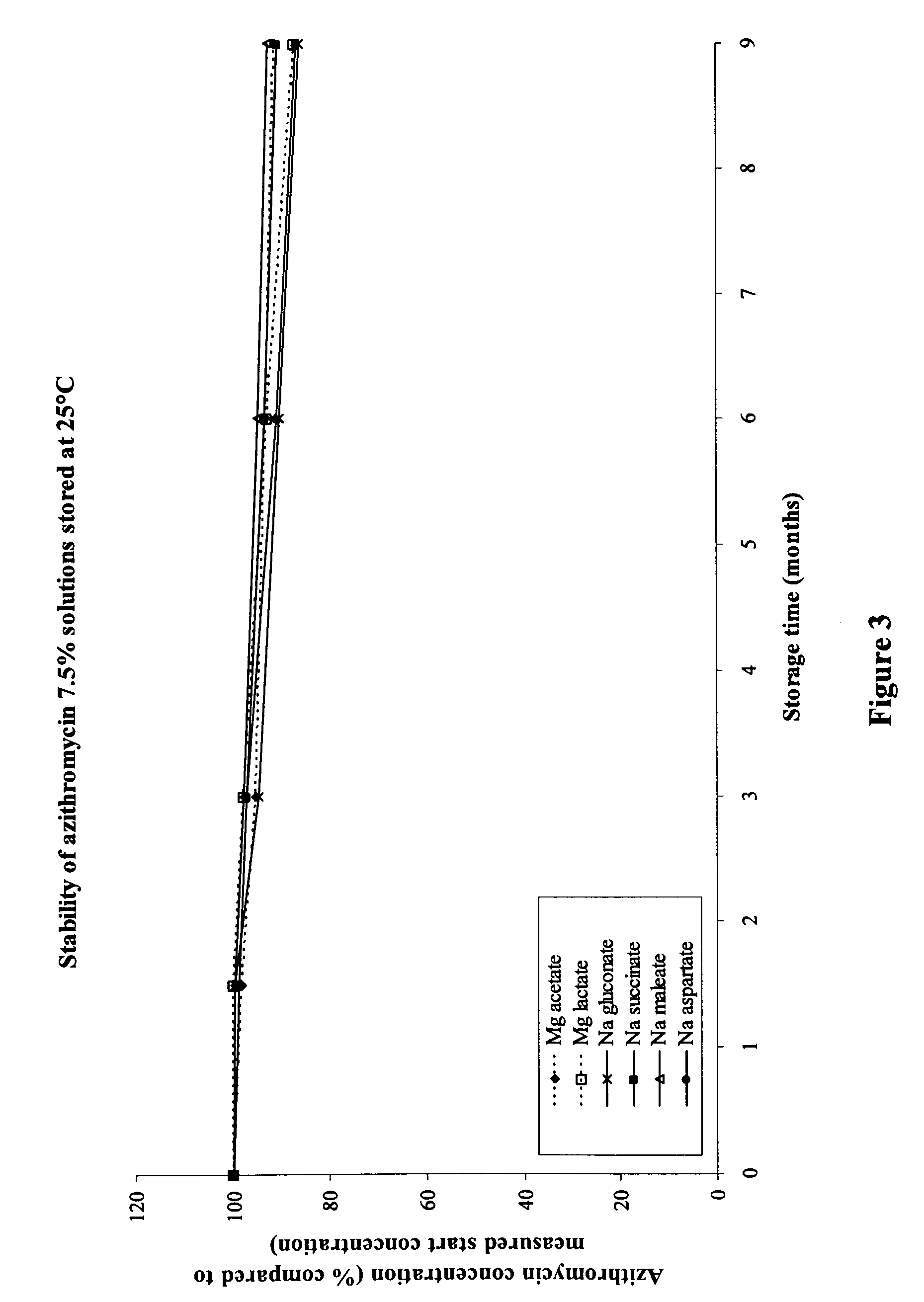Macrolide compositions having improved taste and stability
a technology of macrolide and composition, applied in the direction of biocide, dispersed delivery, aerosol delivery, etc., can solve the problems of poor oral bioavailability (about 10-40%), poor aqueous stability, and bad taste of most macrolides, so as to improve the bad taste and topical tolerability of formulations, and improve the stability of dissolved macrolides
- Summary
- Abstract
- Description
- Claims
- Application Information
AI Technical Summary
Benefits of technology
Problems solved by technology
Method used
Image
Examples
example 1
[0118]54.3 g of azithromycin monohydrate ethanolate (corresponding to 50.0 g azithromycin) was dispersed in approximately 600 ml water for injection containing 20.0 g xylitol, 0.25 g saccharin sodium, and 0.25 g levomenthol. To dissolve azithromycin, the solution was acidified by dropwise addition of 2 N HCl under continuous stirring, until a clear solution was obtained. Immediately after dissolving azithromycin, 36.6 g magnesium gluconate dihydrate was added to the solution (molar ratio of azithromycin:magnesium gluconate was 1:1.2). This resulted in a solution with a pH of 5.2, which was adjusted to 6.3 by dropwise addition of 1 N NaOH. Water for injection was added to the solution to obtain a total volume of 1000 ml. Subsequently, the solution was sterile filtered under laminar air flow by using a 0.22 μm sterile filter and 8 ml were filled in presterilized amber glass vials. The osmolality of the solution was 738 mOsmol / kg. The solution tasted less bitter than a similar azithrom...
example 2
[0119]Similar as described in Example 1, a 7.5% (w / v) solution of azithromycin monohydrate ethanolate was prepared. In this case, 8.14 g of azithromycin monohydrate ethanolate (corresponding to 7.50 g azithromycin) was dispersed in approximately 60 ml water for injection containing 2.0 g xylitol, 0.045 g saccharin sodium, and 0.03 g levomenthol. As in Example 1, azithromycin was dissolved by dropwise addition of 2 N HCl and magnesium gluconate monohydrate was added to the solution (molar ratio of azithromycin:magnesium gluconate monohydrate was 1:1.05, corresponding to the addition of 4.55 g magnesium gluconate monohydrate). The pH was adjusted to 6.3 with 1 N NaOH and water for injection was added to obtain a total volume of 100 ml. Subsequently, 2 ml of the solution was sterile filtered under laminar air flow in presterilized blow-fill-seal vials containing sterile nitrogen gas. The dynamic viscosity of the solution was 1.72 mPa·s and osmolality was 810 mOsmol / kg. Upon nebulisatio...
example 3
[0120]A similar formulation as described in Example 2 was prepared with azithromycin dihydrate instead of azithromycin monohydrate ethanolate. Here, 7.86 g azithromycin dihydrate (corresponding to 7.50 g azithromycin) was dissolved in 100 ml water for injection containing 2.0 g xylitol, 0.045 g saccharin sodium, 0.03 g levomenthol, and 4.55 g magnesium gluconate monohydrate. The pH was adjusted to 6.3. The method for preparing the solutions was the same as described for Example 2. The azithromycin dihydrate solution had a dynamic viscosity of 1.70 mPa·s and an osmolality of 777 mOsmol / kg. Again, the bitter taste of azithromycin was masked well and inhalation did not cause the bad taste sensation and the intolerability that was experienced when inhaling an azithromycin solution without magnesium gluconate.
PUM
| Property | Measurement | Unit |
|---|---|---|
| Temperature | aaaaa | aaaaa |
| Temperature | aaaaa | aaaaa |
| Length | aaaaa | aaaaa |
Abstract
Description
Claims
Application Information
 Login to View More
Login to View More - R&D
- Intellectual Property
- Life Sciences
- Materials
- Tech Scout
- Unparalleled Data Quality
- Higher Quality Content
- 60% Fewer Hallucinations
Browse by: Latest US Patents, China's latest patents, Technical Efficacy Thesaurus, Application Domain, Technology Topic, Popular Technical Reports.
© 2025 PatSnap. All rights reserved.Legal|Privacy policy|Modern Slavery Act Transparency Statement|Sitemap|About US| Contact US: help@patsnap.com



